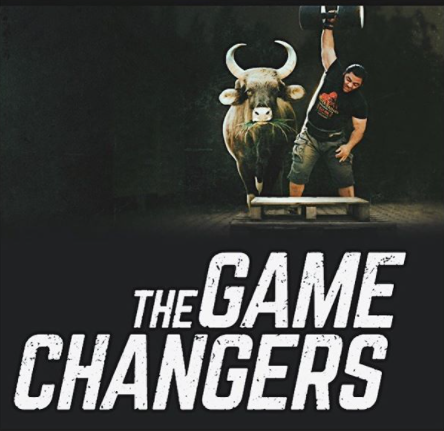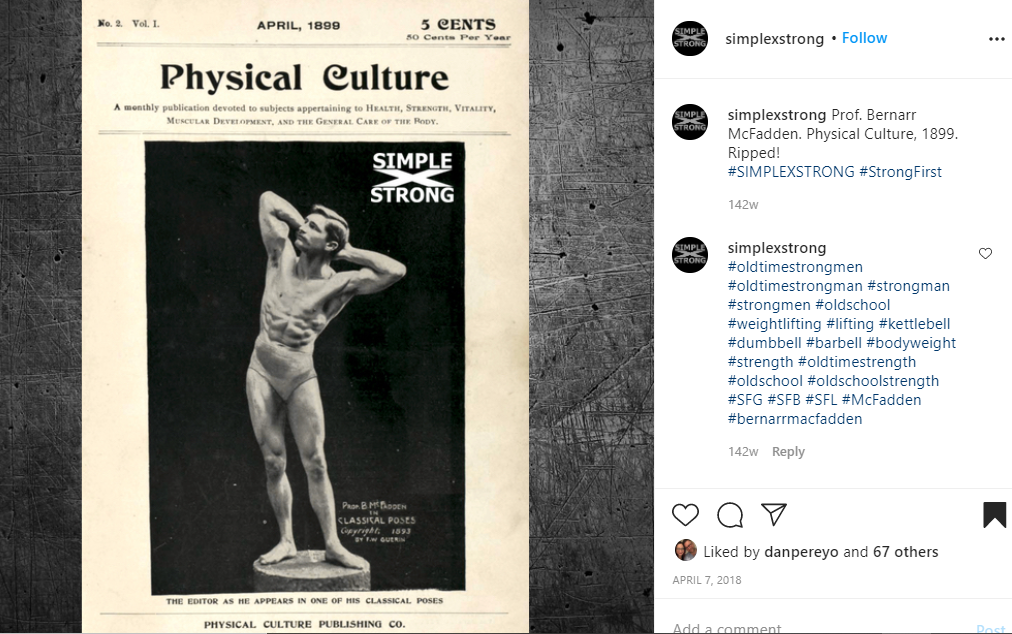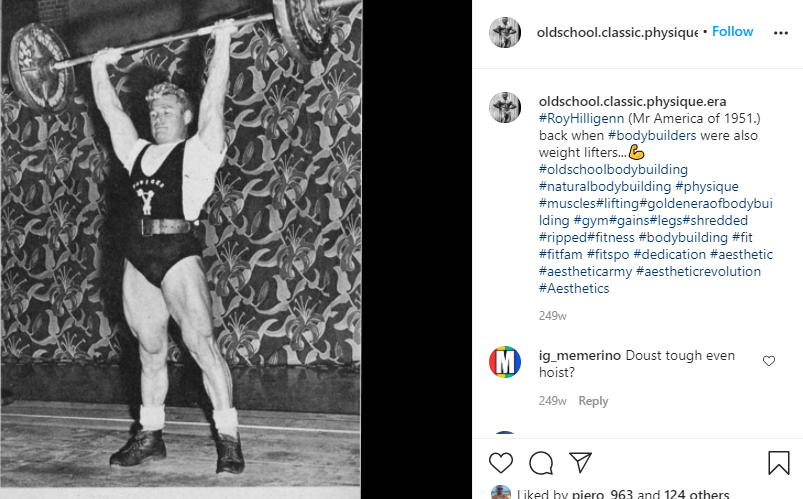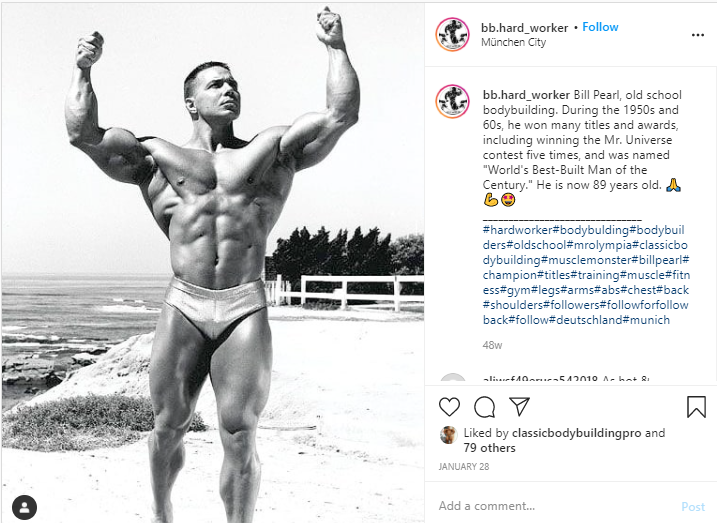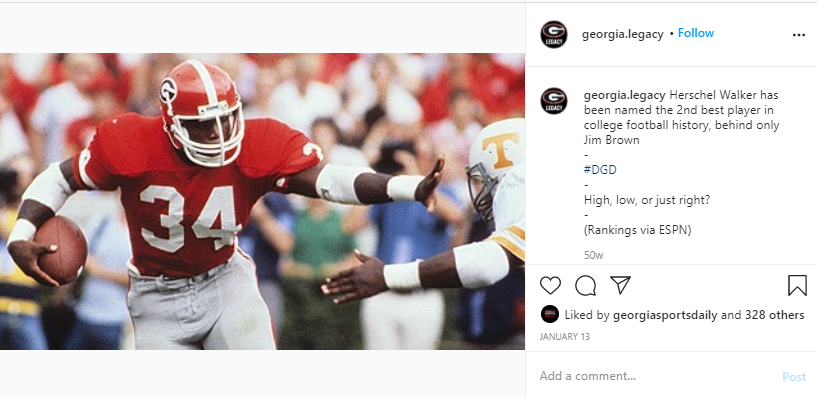A common, and somewhat lazy, accusation against vegan diets is that they don’t provide the requisite protein and calories needed to excel in sports or in the gym. Showing athletes, strongmen and bodybuilders thriving on the vegan lifestyle, Game Changers forced coaches and trainees to seriously consider their diets.
What confused me about Game Changers was not its scientific claims, but the general public’s reaction. For the most part, people seemed perplexed at the claim that athletes and lifters could be vegan.
But this is not a particularly new idea. Far from novel, Game Changers represents the latest in a series of efforts over the last 150 years to prove the benefits of plant-based in modern times, or in the past, vegetarian diets, for strength seekers.
Early History
As Game Changers pointed out, vegetarian and/or vegan diets were used by Roman Gladiators as part of their training programs. Indeed, recent archaeological digs found direct evidence of plant-based diets on the parts of these athletes.(1) What is missing from these debates is the fact that gladiator training schools have been described by some as athletic prison camps.(2) There is, then, a danger in promoting a diet that was potentially forced on the athletes.
That being the case, the physical culture of Hindu wrestlers is a much better example of what vegetarian diets can achieve in the sporting context. Largely unchanged over hundreds of years, Joseph Alter’s work on Hindu wrestling and club swinging stressed the importance of milk, ghee, almond paste, and fruits. Gama the Great, one of the greatest Indian wrestlers from the late nineteenth and early twentieth century, survived on a diet of butter, milk, ghee, and fruits.(3) Aside from tossing and slamming every European and American wrestler who crossed his path, Gama was renowned for his ability to do thousands of Hindu squats and push ups in a single training session. Gama’s diet likely mimicked that of his Hindu predecessors many centuries before him. .
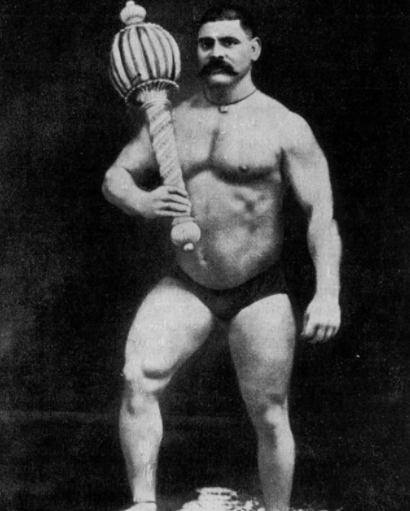
Instagram sport_specific The #greatgama of the #punjab. (#india) A truly legendary Grappler and Strong Man. The #club is mankind’s oldest weapon, and the oldest training equipment; even older than the #kettlebel
Turning to Europe and the United States, which was the prime focus of Game Changers, the history of vegetarian or vegan athletes is rather more modern than Ancient Rome or India. James Gregory’s work on vegetarianism in Great Britain explained that plant-based diets only came into vogue in the 1810s and 1820s.(4) Not initially a health concern, these diets were part of a moral social movement which sought to lessen the suffering of animals through plant-based diets.
The moral undertones of vegetarianism meant that vegetarians in Britain in the early nineteenth century were subject to many of the insults and criticisms still used today: they were accused of being weak, unathletic, nutritionally deficient and slightly preachy.(5) Such gibes explain why, during the 1840s and 1850s, famous vegetarian promoters in the United States, like Sylvester Graham and William Alcott, wrote about the benefits of a vegetarian diet in physical tests. Alcott, for example, credited his diet with allowing him to run the mile between his home and the post office, or being capable of walking 78 miles over two days.(6)
What has been lost about Kellogg is that he was a well respected surgeon and entrepreneur. From the 1870s, Kellogg sold a series of nutritional supplements for vegetarians as well as overseeing health camps for those seeking to revive their health through plant-based diets. Kellogg’s Battle Creek Sanitarium, a (meatless) health club in Massachusetts, helped normalise (at least somewhat) the idea of vegetarian diets.(9)
What was notable about Kellogg’s Battle Creek Sanitarium was that many of its clients returned from his camps bragging about their improved health, physiques and endurance. In effect, the Sanitarium served as a bedrock of knowledge for vegetarian diets. Similarly, Kellogg’s many connections helped pique the interest of scientists and the general public about what impact, if any, vegetarian diets could have in athletics. The ground was set for the growth of scientific studies into plant-based diets.
Related: Weightlifter Clarence Kennedy Talks Snatching 185kg on a Vegan Diet]
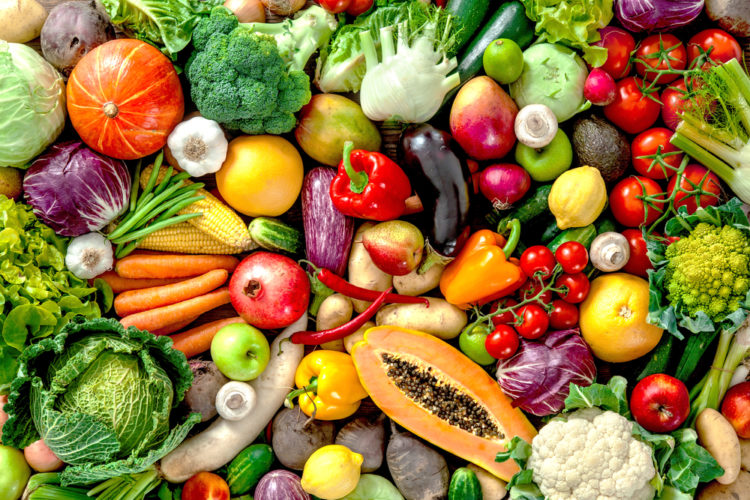
Rise of the Science-Based Vegetarians
The closing decades of the nineteenth century saw dozens of popular and scientific experiments pitting vegetarian and flesh eating athletes against one another. Long distance walking races, also known as pedestrianism, were particularly emphasized at the time.
In 1893, a 372-mile walking race from Berlin to Vienna was held. In first and second place respectively were two vegetarian athletes, a result, James Whorton argued, sent ripples across the sporting world.(10) Soon, other results started to filter through.
Several years later, a 62-mile walking race was held in Germany where 11 of the first 14 finishers were vegetarians. Another German race saw six vegetarians achieve top ten finishes in a 70-mile walking race in less than fourteen hours.(11) No meat eater, in contrast, finished the race. One of the most prolific vegetarian athletes of the age was Jonathan Barclay, secretary of the Scottish Vegetarian Society, who in 1896 competed in over twenty races from the half mile to ten miles.(12) Never finishing less than third, Barclay’s success was linked directly to his vegetarian diet.
“Another German race saw six vegetarians achieve top ten finishes in a 70-mile walking race in less than fourteen hours. No meat eater, in contrast, finished the race.”
As word got round about these vegetarian athletes, some researchers, like the Yale economist Irving Fisher, began to take interest. In the late 1890s and early 1900s, Irving held a series of tests comparing the strength and endurance of vegetarian and omnivorous subjects. One such test took close to fifty college athletes and split them into three groups: meat eating athletes, vegetarian athletes, and sedentary vegetarians. They were then put through the following physical tests
- Rising on the toes as many times as possible.
- Deep knee-bending (a.k.a. squatting) for as many reps as possible.
- While lying on the back, raising the legs from the floor to a vertical position and lowering them again, repeating to the point of physical exhaustion.
- Overhead tricep extensions (a.k.a. The French press) with 5lb dumbbells, repeating to the point of physical exhaustion.
- Holding the arms horizontally out to the sides for as long a time as possible.
- Bicep curls for as many reps as possible. This test was taken with four successive dumbbells of decreasing weight, viz., 50, 25, 10 and 5 lbs.(13)
So the sporting world began to take notice of plant-based diets. What, then, of the gym goers?
Vegetarian and vegan bodybuilders, although not as prevalent as today, nevertheless thrived one hundred years ago. Leading the way in this regard were two men, Bernarr MacFadden and Eustace Miles. MacFadden was one of America’s most popular and renowned fitness authorities of the early twentieth century. His Physical Culture magazine, begun in 1899, had a readership counting over 100,000 people by the end of the 1900s. Similarly, his physical culture books were routinely in high demand.(15)
What is important about MacFadden is that he linked a plant-based diet and, at times, fasting, to the creation of a strong and muscular body. In countless articles for Physical Culture, MacFadden told readers that vegetarian diets could make people leaner, healthier and stronger than ever before.
He didn’t just talk the talk either. On lecture tours, MacFadden often challenged meat eaters to best him in feats of strength and endurance. Writing many years later, MacFadden’s ex-wife remembered feats of endurance during which meat eaters collapsed on the stage, exhausted from attempting to perform more bodyweight squats than MacFadden.(16)
Miles is particularly important in this story because of his well publicised victories. In 1908, Miles won a silver medal at the Olympic Games at the ripe old age of 40! In physical culture books, Miles told his followers that his strength and vigor was a direct result of his plant-based diet.(18) In Miles and MacFadden, the physical culture world of weight trainers and gym goers were given examples of what a plant-based diet could achieve. Importantly, both men use public displays and sport to highlight their strength, published cookbooks on vegetarianism and disproved any ideas that vegetarianism was in some way inferior.
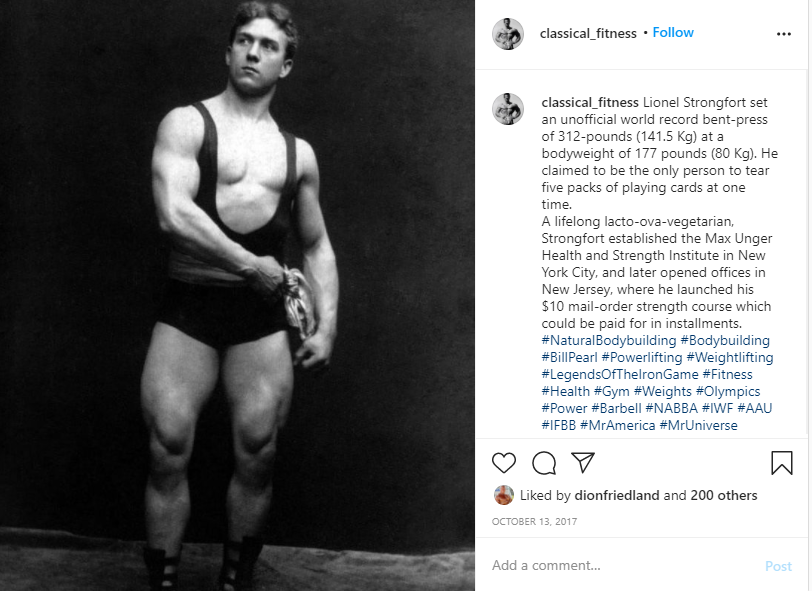
Mid-Century Mavericks
MacFadden and Miles helped encourage individuals on both sides of the Atlantic to take up a vegetarian diet. This continued to be the case during the 1920s and 1930s when several famous weightlifting coaches, like Mark Berry, admitted to experimenting with plant-based diets. Similarly, early bodybuilders such as Lionel Strongfort, recommended something like a lacto-ovarian diet.(19) (What’s generally called a “vegetarian diet” today.) MacFadden kept publishing diet tracts well into the 1940s, and others in the field of sport nutrition favored a vegetarian diet for athletes.
So clearly a vegetarian diet for athletes and weight trainers was favored by some. It wasn’t however, until the 1950s that some real heavy hitters began promoting it.
In the realm of sports, we continued to have successful athletes thrive on vegetarian diets. Where Paavo Nurmi, the ‘Flying Finn’, was promoted as the ideal vegetarian athlete during the 1920s, those in the mid-century looked towards Australian swimmer, Murray Rose.(20)
Rose, who won four gold medals between the 1956 and 1960 Olympic Games, was a vegan athlete, whose constant media attention earned him the nickname of the ‘Seaweed Streak.’ A 1961 Sports Illustrated article on Rose spoke on his importance for vegetarian and vegan athletes. Noting that this diet was still seen as an oddity, the magazine cited Rose as a champion for all vegetarian athletes.(21) Not only had his performance at the ‘56 games become ‘a showdown between the meat-eaters and the vegetarians’, Murray became a star in his own right, with journalist Arlie Schardt dubbing him the ‘Golden Boy.’(22)
What About the Average Gym Goer?
We return then to our question of what about the gym goers? The lifters? The (for want of a better term) the ‘meat heads’? They, too, were beginning to experiment more and more with these diets. South African born Roy Hilligenn was perhaps the strongest, and most impressive vegetarian bodybuilder and lifter of the age. Hilligenn won the AAU Mr. America in 1951 following a series of regional titles in South Africa. What was important about Hilligenn was that he was known and respected for his strength as well as his aesthetics. Although not an active Olympic weightlifter, Hilligenn regularly featured in Strength and Health magazine clean and jerking over 400 lbs. with ease at a bodyweight of 173 lbs.(23) By anyone’s standards, it was impressive.
Finishing the Century Strong
Up to the 1960s and 1970s, vegetarianism was still very much a fringe activity. What helped to effect real change was the countercultural movement which swept across much of Western Europe and the United States. Defined for many by the hippie movement, it encouraged the questioning of authority and promotion of new ideas. In 1971, Rags magazine wrote that:
“To many Americans, vegetarianism represents another weirdo protest of the head generation against mom-and-apple-pie-ism.”
Critically, Time magazine later pointed out that being a weirdo was no longer a bad thing.(25)
This meant that vegetarian athletes and bodybuilders grew in number and respectability. In the bodybuilding world, people like Bill Pearl and Al Beckles, changed perceptions about what a top bodybuilder could look like and eat. Both subscribed to vegetarian diets. For the mere mortal, Vince Gironda regularly promoted vegetarian diets for weight trainers and bodybuilders.(26)
Interest in vegetarianism grew for athletes in the growing field of sport nutrition. In 1968, a Danish research team tested endurance cyclists fed a variety of diets. Some were given meat and vegetables, others just vegetables. The result? The vegetarians outlasted their meat eating comrades.(27) The next two decades were defined by researchers, such as A.C. Grandjean and D.C. Nieman, who studied the vegetarian diet in athletes. But that did little for the general public, what mattered more was seeing vegetarian athletes dominate their respective sports.
In the endurance world, tri-athletes like Dave Scott and Ruth Heidrich seemed to prove the superiority of vegetarian diets. They were joined by Olympic gold medalists in sprinting like Carl Lewis and even NFL players Joe Namath and Fred Dryers. On his induction into the NFL Hall of Fame in 1985, Namath told the audience that ‘I have been a vegetarian for a few years. Fred Dryer of the Rams has been one for 10 years. It shows you don’t need meat to play football.’(28)
By the year 2000, the fitness and sporting world got to a place where vegetarian diets, although still seen as a fringe, or indeed strange, practice, had grown in popularity. Would it ever become commonplace?
New Millennium, New Meals
Publishing on the value of vegetarian and vegan diets for athletes in 2010, Joel Fuhrman and Deana M. Ferreri noted the increasing number of athletes on plant-based diets. This phenomenon, which was several decades in the making, had started to reach a tipping point.(30) As teams and athletes continued to search for a competitive edge, the supposed promises of plant-based diets such as injury prevention, more energy, better mood etc., were attracting more and more people.
It would, however, be ridiculous, not to mention the growing environmental concerns underpinning the increased popularity of plant-based diets. Across much of Europe and North America, vegan diets have become more normalised owing to the fact that our increasing unsteady climate has prompted some real soul searching about the ecological effects of our diets.(31) For athletes, the growing public support for plant-based diets has meant that using these diets has become acceptable and advantageous.
What then, of the weight lifters, strength athletes and gym goers? Game Changers addressed this fact pretty well, calling on everyone from USA weightlifter Kendrick Farris to bodybuilding legend Arnold Schwarzenegger. While people may dispute some of Game Changer’s claims — the reputation of vegan strongman Patrik Baboumian being one example — the documentary nevertheless pointed to the fact that you can build muscle without the use of meat.

Wrapping Up
Despite what the internet may tell you, vegetarian and vegan athletes are not particularly new. Neither are the criticisms levelled against them. Many of the myths that Game Changers set out to challenge were those that Irving Fisher’s lab examined over a century ago. The real question to ask is not why should athletes go vegan but rather why have vegans consistently had to prove the value of their diet. After one hundred years, it is time to live and let eat.
Publisher’s Note: Click Great Vegan Athletes for Vegan Bodybuilders and many more Vegan Athletes.

.
.
.
,
Conor Heffernan Bio:
 Historian Conor Heffernan is Assistant Professor of Physical Culture and Sport Studies at the University of Texas at Austin.
Historian Conor Heffernan is Assistant Professor of Physical Culture and Sport Studies at the University of Texas at Austin.
.
.
.
.
.
.
Featured image via @sportspecific and @bb.hard_worker on Instagram.
References:
1. Longo, U.G., Spiezia, F., Maffulli, N. and Denaro, V., 2008. The best athletes in ancient Rome were vegetarian!. Journal of Sports Science and Medicine, 7 (4), pp.565-565.
2. Meijer, Fik. The gladiators: history’s most deadly sport. Macmillan, 2007.
3. Alter, J.S., 2000. Subaltern bodies and nationalist physiques: Gama the great and the heroics of Indian wrestling. Body & society, 6(2), pp.45-72.
4. James Gregory. Of Victorians and Vegetarians: The Vegetarian Movement in Nineteenth-Century Britain. London: Tauris Academic Studies, 2007.
5. Ibid.
6. Whorton, J.C., 1981. Muscular vegetarianism: the debate over diet and athletic performance in the progressive era. Journal of sport history, 8(2), pp.58-75.
7. Ibid.
8. Shprintzen, Adam D. The vegetarian crusade: the rise of an American reform movement, 1817-1921. UNC Press Books, 2013.
9. Whorton, Muscular vegetarianism.
10. Ibid.
11. Ibid.
12. Bloomfield, P., 1962. Captain Barclay. The Eugenics Review, 54(1), p.25.
13. Fisher, I., 1908. The influence of flesh-eating on endurance. Modern Medicine Publishing.
14. Ibid.
15. Hunt, William R. Body Love: The Amazing Career of Bernarr Macfadden. Popular Press, 1989.
16. Mary Williamson MacFadden, Dumbbells and Carrot Sticks: The Story of Bernarr MacFadden. Holt, 1953.
17. Miles, Eustace. Failures of Vegetarianism. Sonnesnschein, 1902.
18. Ibid.
19. Randy Roach, Muscle, Smoke & Mirrors: Volume II. Authorhouse, 2011.
20. Posey, Carl. XVI Olympiad: Melbourne/Stockholm 1956, Squaw Valley 1960. Vol. 14. Warwick Press Inc., 2015.
21. Arlie Schardt, ‘Seaweed, Speed and Sunflower Speed’, Sports Illustrated. August 14, 1961.
22. Ibid.
23. Miller, Carl. The Sport of Olympic-Style Weightlifting. Sunstone Press, 2011.
24. Kar, Subhabrata. “Indigenous Physical Culture of Bengal During the British Regime.” Language in India 13, no. 6 (2013).
25. Marta Zaraska, ‘This Is Why Vegetarianism Didn’t Catch on Until Recently’, Time Magazine, February 23, 2016. Available at: https://time.com/4220270/vegetarianism-history-meathooked/
26. Roach, Randy. Muscle, smoke, and mirrors. Vol. 1. AuthorHouse, 2008.
27, ÅSTRAND, P.O., 1968. Something old and something new… very new. Nutrition Today, 3(2), pp.9-11.
28. Brian Merchant, ‘9 Superstar Athletes who Don’t Eat Meat’, MNN, March 5, 2013. Available at: https://www.mnn.com/food/healthy-eating/photos/9-superstar-athletes-who-dont-eat-meat/joe-namath.
29. Vicki Vaughan, ‘Expansion Plans’, Orlando Sentinel, August 19, 1985. Available at: https://www.orlandosentinel.com/news/os-xpm-1985-08-19-0320240209-story.html.
30. Fuhrman, J. and Ferreri, D.M., 2010. Fueling the vegetarian (vegan) athlete. Current sports medicine reports, 9(4), pp.233-241.
31. Rogerson, D., 2017. Vegan diets: practical advice for athletes and exercisers. Journal of the International Society of Sports Nutrition, 14(1), p.36.
This article originally appeared in Barbend Magazine

